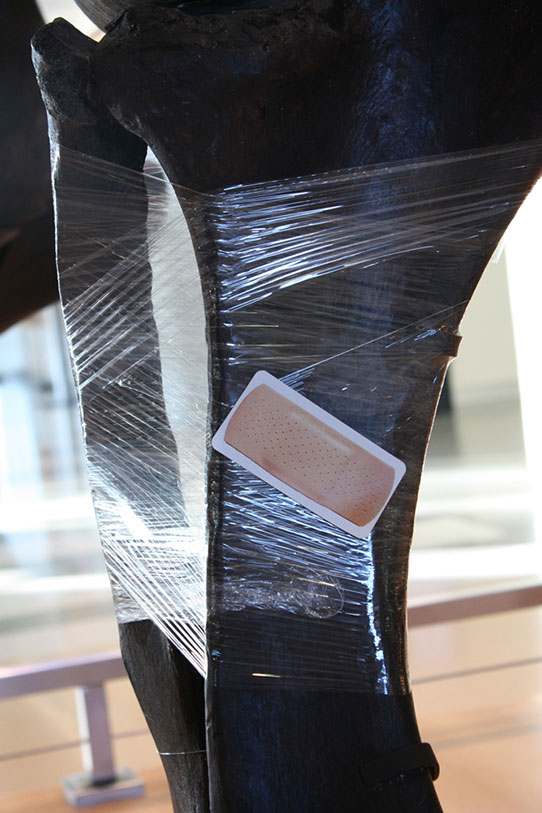Heritage Outbound Winter Adventure
One of my favorite heritage tourism programs is coming up very soon: Heritage Outbound! The Heritage Outbound Winter Adventure, an annual day of activities and learning at Fort Clark State Historic Site, will be on February 11, 2017. I’ve been fortunate to be involved with this outreach program for nearly 15 years, and it’s always been a great experience!

Allen Demaray plays traditional flute music in the earthlodge at Knife River Indian Villages National Historic Site during the 2016 Heritage Outbound Winter Adventure. Image courtesy of Brooke Morgan.
We help participants focus on the history and culture of the Mandan, Hidatsa and Arikara peoples at the confluence of the Knife and Missouri rivers. The State Historical Society of North Dakota has once again partnered for this year’s event with the Knife River Indian Villages National Historic Site, the Mandan, Hidatsa, and Arikara Nation, the Knife River Indian Heritage Foundation, and the North Dakota Archaeological Association.
It’s been fun to watch the Heritage Outbound program evolve over the years. The program got its start in the period leading up to the Lewis & Clark Bicentennial of 2004-2006 (remember those two guys?), with Heritage Outbound starting as a multi-day affair offered during the winter and summer seasons. The winter program introduced participants to seasonal activities like snowshoeing and winter camping in below-freezing weather. My friend, Calvin, had remembered to bring a bison hide to keep warm the one year when we winter-camped at the historic Lower Hidatsa earthlodge village, but I had to make do with two sleeping bags! The Heritage Outbound summer program focused on the Missouri River as a transportation corridor, and we put the participants into expedition canoes. We camped overnight in a wonderful camp by the river, holding educational programs and sharing traditional stories under the summer stars.
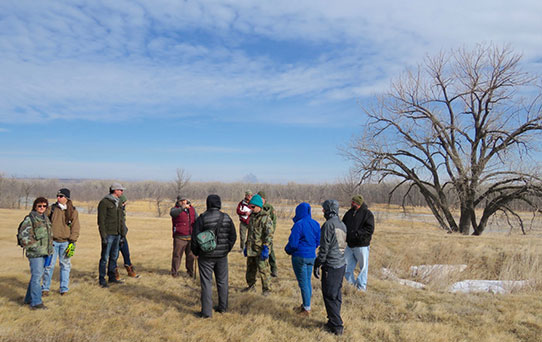
State Historical Society of North Dakota Curator of Education Erik Holland points out the locations of Fort Clark fur trade post and Mih-Tutta-Hang-Kush earthlodge village to Heritage Outbound participants – February 2016. Image courtesy of Doug Wurtz.
This year’s adventure will begin with a morning snowshoe hike at Fort Clark State Historic Site. The site is the location of the historic Mandan earthlodge village of Mih-Tutta-Hang-Kush . The village was later occupied by the Arikara people, and an important fur-trade era post was established there during that time. During our site visit we’ll discuss archaeological investigations recently conducted at Fort Clark by the State Historical Society and the PaleoCultural Research Group.
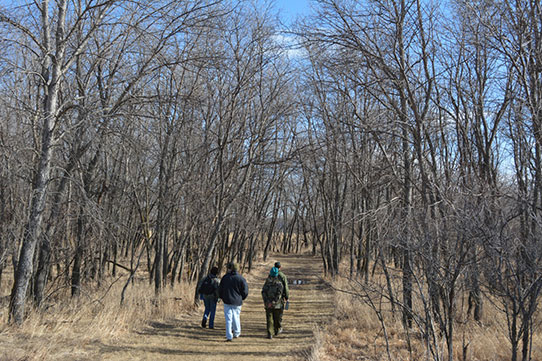
Heritage Outbound participants enjoy a pleasant (snow-free) walk on the Two Rivers Trail near the Big Hidatsa earthlodge village in Knife River Indian Villages National Historic Site – February 2016. Image courtesy of Doug Wurtz.
After lunch, we’ll learn about the lifeways of the Hidatsa peoples. We’ll be hiking and learning as we explore the Lower Hidatsa and Sakakawea villages, two important earthlodge villages located in Knife River Indian Villages National Historic Site. Outdoor activities like fire-starting, using atlatls to throw darts (always a fun time) and other traditional winter games keep the afternoon lively and fun. We’ll also be joined during this year’s activities by living history presenters Chris Floyd and Terry Madden of The American Mountain Men.
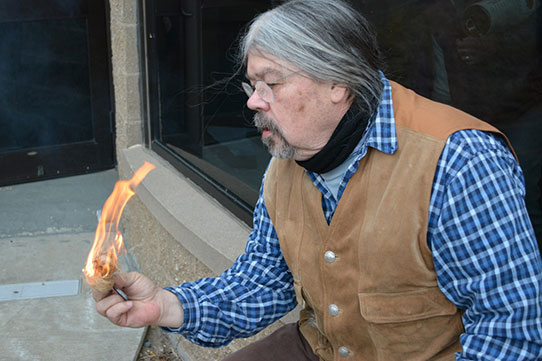
SHSND Curator of Education Erik Holland demonstrates flint and steel fire-starting during the 2016 Heritage Outbound Winter Adventure. Image courtesy of Brooke Morgan.
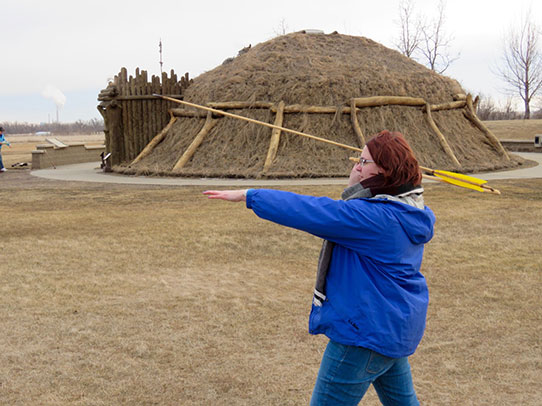
2016 Heritage Outbound Winter Adventure participant Brooke Morgan demonstrates the proper form used in atlatl dart throwing. Note the reconstructed earthlodge at Knife River Indian Villages National Historic Site visible in the background. Image courtesy of Doug Wurtz.
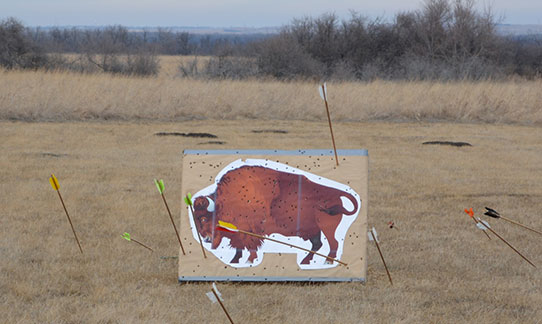
2016 Heritage Outbound Winter Adventure atlatl target practice. Image courtesy of Brooke Morgan.
The day-long program concludes with a traditional meal, story-telling, and songs around a warm fire in the recreated earthlodge at Knife River. We’ll be joined this year by the Baker-Demaray family of the Mandan, Hidatsa, Arikara Nation. The evening activities in the earthlodge are among my favorite. The warmth of shared experience and camaraderie among new friends around the fire in the earthlodge all make for a magical conclusion to a great day.
If you’re interested in registering for this year’s Heritage Outbound Winter Adventure on February 11, please register at heritageoutbound2017.eventbrite.com.
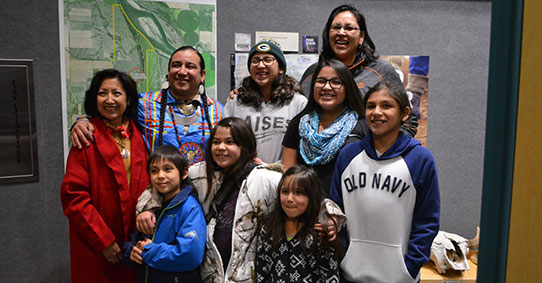
The Baker-Demaray family and Amy Mossett of the Mandan, Hidatsa, Arikara Nation gather in the Knife River Indian Villages National Historic Site visitor center at the conclusion of the 2016 Heritage Outbound Winter Adventure. Image courtesy of Brooke Morgan.


